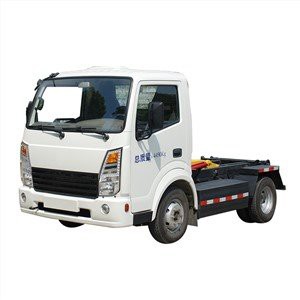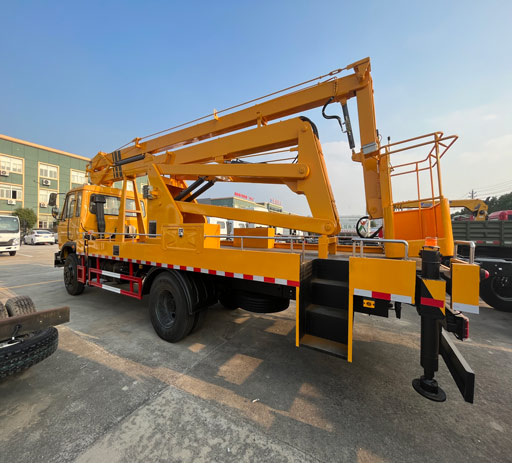Understanding Fire Fighting Trucks: Features, Types, and Importance

Fire fighting trucks are one of the most essential vehicles used by fire departments worldwide. They are equipped with advanced tools and technologies to combat fires efficiently and effectively, ensuring the safety of communities and properties. In this article, we will explore the different types of fire fighting trucks, their features, maintenance tips, and more to give you a comprehensive understanding of this vital apparatus.
The Importance of Fire Fighting Trucks
Fire fighting trucks play a critical role in emergency response. They are designed to deliver water, equipment, and personnel to the fire scene quickly. Their importance can be seen in various ways:
- Rapid Response: Speed is crucial in fighting fires, and these trucks are built for quick deployment.
- Water Supply: Equipped with water tanks and pumps, fire fighting trucks can supply high volumes of water to extinguish fires.
- Safety Equipment: They carry essential gear to protect firefighters and allow them to operate in hazardous environments.
Types of Fire Fighting Trucks
1. Fire Engine
Fire engines are the most common type of fire fighting truck. They are equipped with water pumps, hoses, and water tanks. Fire engines respond to a variety of emergencies beyond just fires, such as medical emergencies and hazardous material incidents.
2. Fire Ladder Truck
Ladder trucks, or aerial trucks, are designed to reach high places. They come equipped with extendable ladders that can reach several stories high, allowing firefighters to rescue individuals and combat fires in tall buildings.
3. Brush Truck
Brush trucks are designed for wildland firefighting. They are typically smaller than traditional fire engines and are equipped with off-road capabilities to navigate rugged terrain. These trucks carry specialized equipment like water tanks and foam systems to fight brush fires effectively.
4. Tanker Truck
Tanker trucks are used to transport large quantities of water to fire scenes, especially in areas where municipal water sources are not readily available. They are crucial for rural firefighting efforts.
5. Rescue Truck
Rescue trucks are equipped with specialized tools for search and rescue operations. They carry hydraulic rescue tools, medical equipment, and additional personnel to assist in emergencies like vehicle accidents and building collapses.
Key Features of Fire Fighting Trucks
Water Delivery Systems
The ability to deliver water rapidly is one of the key features of fire fighting trucks. Most fire engines come with an onboard pump, water tank, and hoses. The following table details common water delivery systems found in fire fighting trucks.
| Type | Purpose | Capacity |
|---|---|---|
| Fire Engine Pumps | Deliver water to hoses | 500-2000 GPM |
| Attack Lines | Immediate fire suppression | 1.5-3 inches in diameter |
| Supply Lines | Transport water from a source | 3-5 inches in diameter |
Gear and Equipment Storage
Fire fighting trucks are equipped with compartments to store essential gear such as hoses, nozzles, ladders, and personal protective equipment. This organization is crucial for quick access during emergencies.
Communication Systems
Effective communication is vital in emergency response. Fire fighting trucks are equipped with radios and communication devices to ensure teams can coordinate their efforts effectively.
Advanced Technology

Modern fire fighting trucks often incorporate advanced technology such as thermal imaging cameras, GPS systems, and incident management software to enhance their firefighting capabilities and operational efficiency.

Maintenance of Fire Fighting Trucks
Regular Inspections
Preventive maintenance is essential for fire fighting trucks to ensure reliability and safety. Fire departments should conduct regular inspections, including:
- Checking water tanks for leaks
- Inspecting hoses and nozzles for wear and tear
- Testing pumps and valves
Routine Cleaning
After every use, fire fighting trucks should be cleaned to remove dirt, chemicals, and debris. This practice helps maintain the trucks’ appearance and prolongs their lifespan.
Scheduled Repairs
Fire departments should have a maintenance schedule for repairs and part replacements. This may include:
- Replacing worn-out tires
- Getting regular oil changes and engine checks
- Refurbishing tools and equipment as needed

Fire Fighting Strategies and Techniques
Fire Suppression Techniques
Firefighters use various techniques to suppress fires, including:
- Direct Attack: Applying water directly to the flames to extinguish them.
- Indirect Attack: Cooling the environment around the fire to prevent its spread.
- Backfire: Creating controlled burns to eliminate fuel and stop a wildfire from advancing.
Rescue Operations
Fire fighting trucks are often involved in rescue missions. Firefighters are trained to:
- Assess the situation quickly
- Implement safe evacuation techniques
- Utilize rescue tools effectively
Fire Prevention and Community Awareness
Fire departments often conduct community outreach programs to educate the public about fire safety. Techniques include:
- Conducting fire drills
- Offering fire safety workshops
- Installing smoke alarms in homes
Practical Tips for Choosing Fire Fighting Trucks
Assess the Needs of Your Fire Department
Different departments have varying needs based on their location. Consider the following:
- The type of terrain (urban vs. rural)
- The frequency of wildfires
- Building types in the area
Budget Considerations
When budgeting for fire fighting trucks, it’s essential to include not just the purchase price but also maintenance and operational costs. This includes:
- Fuel costs
- Insurance
- Repair and maintenance expenses
Evaluate Durability and Performance
Consider models known for reliability and performance under pressure. Look for:
- Warranty coverage
- Reviews from other fire departments
- Resale value
Future Trends in Fire Fighting Trucks
Electric and Hybrid Fire Trucks
With a growing focus on sustainability, electric and hybrid fire trucks are emerging. These vehicles offer reduced emissions and maintenance costs.
Smart Fire Fighting Technology
Advancements in technology are making fire fighting trucks smarter. Features may include:
- Automated fire suppression systems
- IoT integration for real-time data collection
- AI-based analysis for predictive maintenance
Enhanced Training Simulators
Fire departments are increasingly using advanced simulators for training. This technology enables realistic training scenarios without the dangers of live fire exercises.
Frequently Asked Questions (FAQ)
1. What is the average cost of a fire fighting truck?
The cost can vary widely, ranging from $200,000 to over $1 million, depending on the type and specifications.
2. How often should fire fighting trucks be maintained?
It’s recommended to conduct inspections monthly, with more thorough maintenance every six months to a year.
3. What is the lifespan of a fire fighting truck?
On average, fire fighting trucks can last between 15 to 25 years, depending on usage and maintenance.
4. Can fire fighting trucks be used for other emergencies?
Yes, fire fighting trucks are often equipped to handle medical emergencies, hazardous materials, and rescue operations.
5. Are there different regulations for fire fighting trucks in different countries?
Yes, fire fighting truck regulations and standards can vary by country, often influenced by local fire codes and safety requirements.
6. How do fire departments decide on the types of trucks to purchase?
Decisions are based on community needs, types of emergencies typically encountered, budgetary constraints, and the size of the department.
